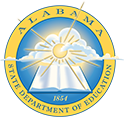This lesson will include the use of a primary document and period photographs for a cross-curriculum lesson analyzing setting to identify some adverse effects of the Great Depression for farmers. The student will create a postcard which depicts an understanding of the impact of the Great Depression on farmers.
This lesson was created as a part of the Alabama History Education Initiative, funded by a generous grant from the Malone Family Foundation in 2009.
Author Information: April Mitchell (Cohort 2: 2010-2011); Greenwood Elementary; Bessemer City Schools; Bessemer, AL
